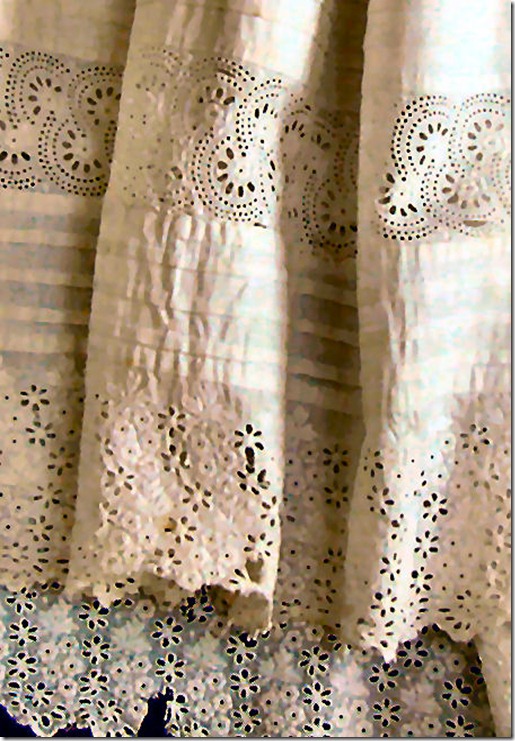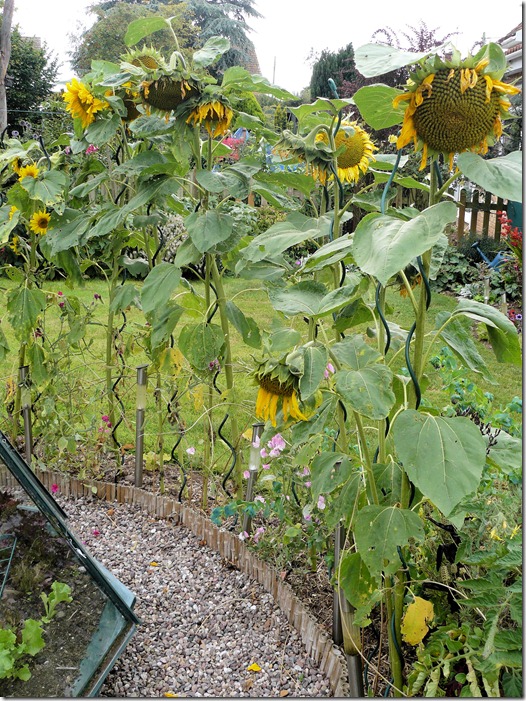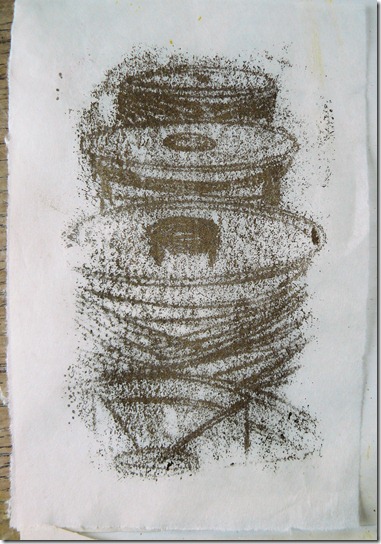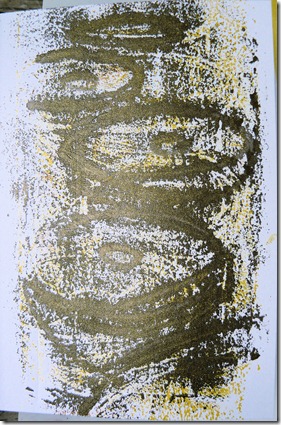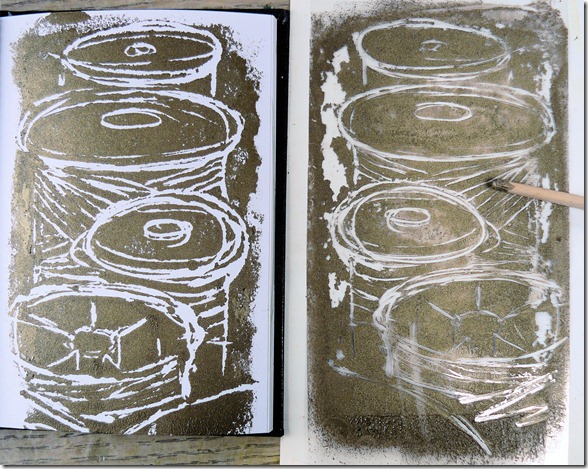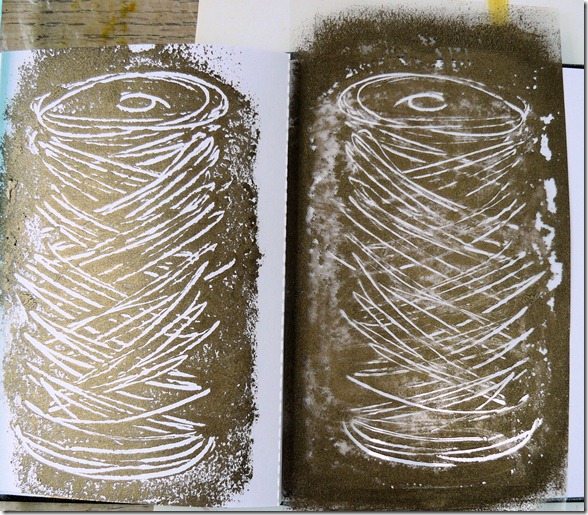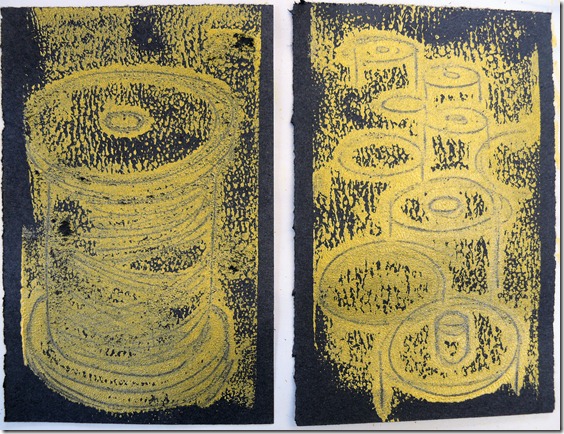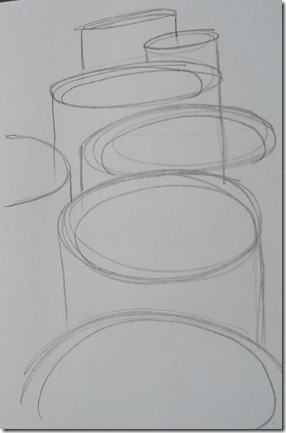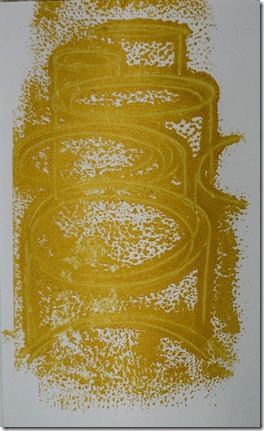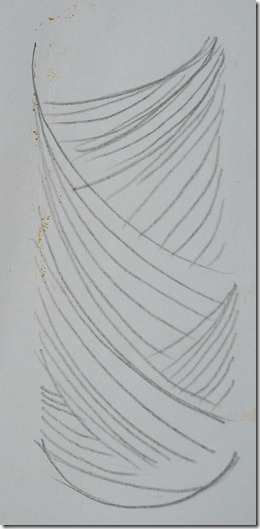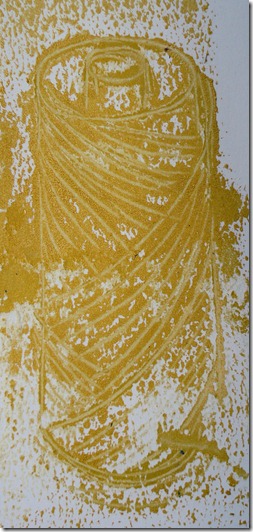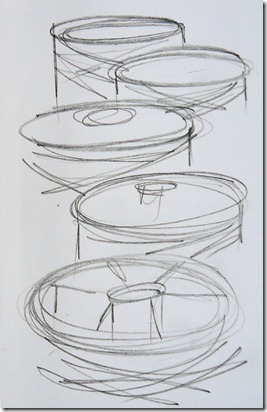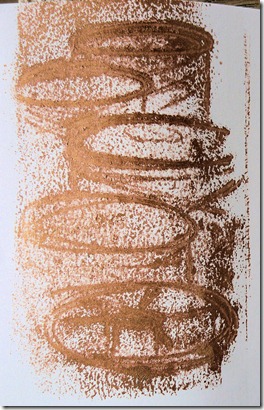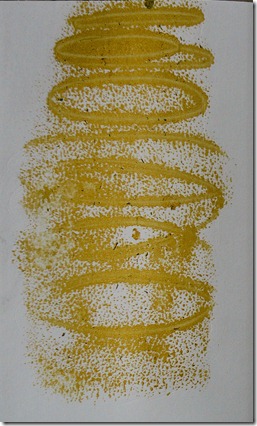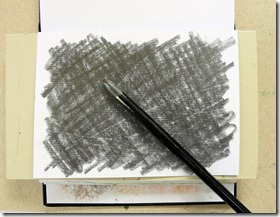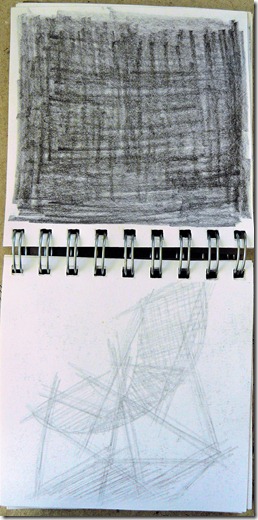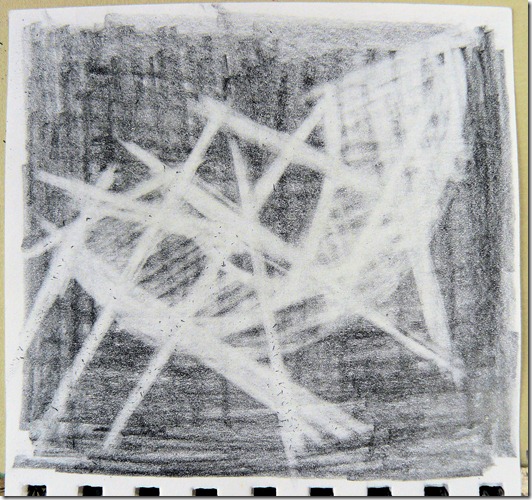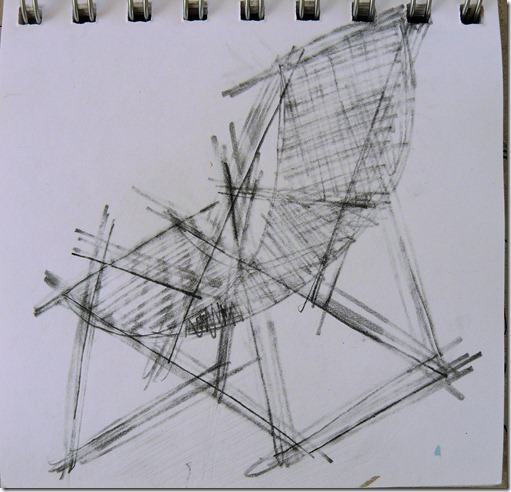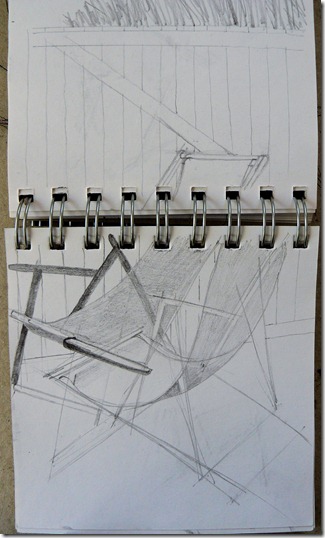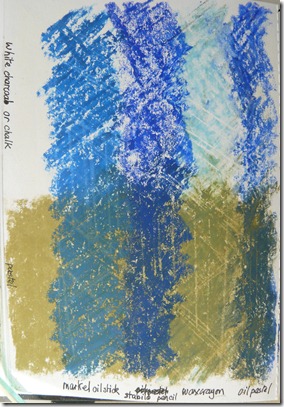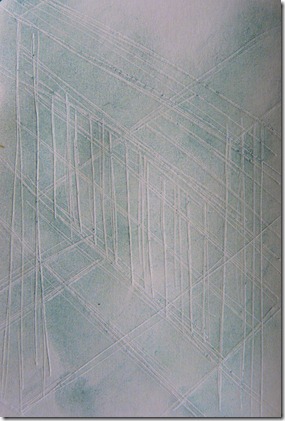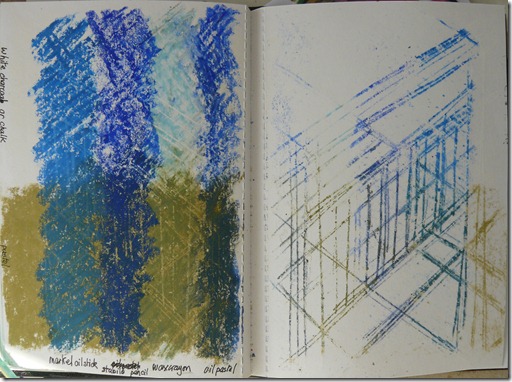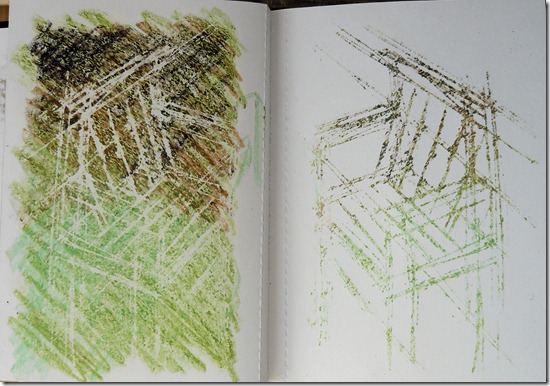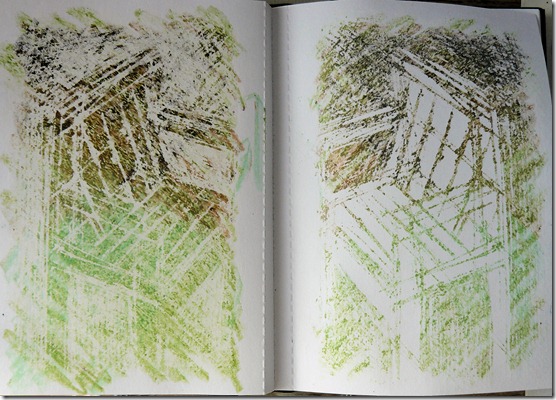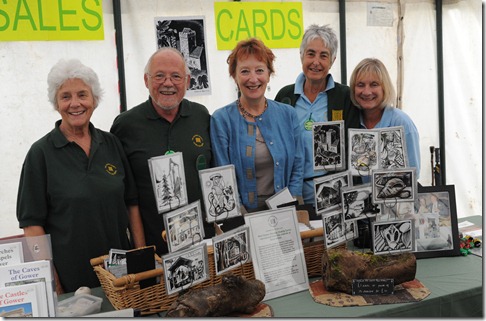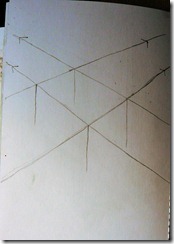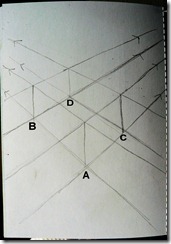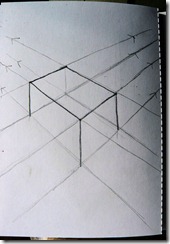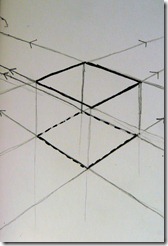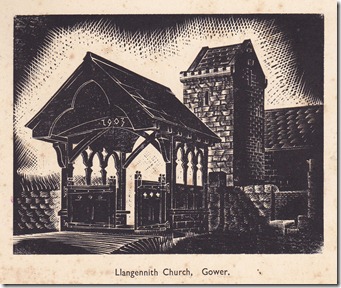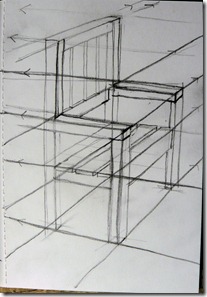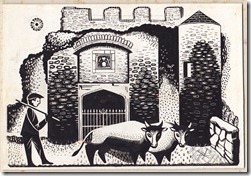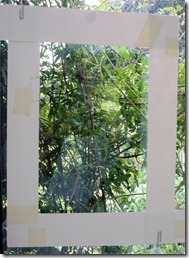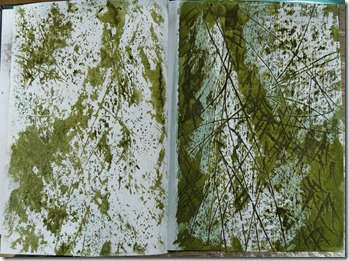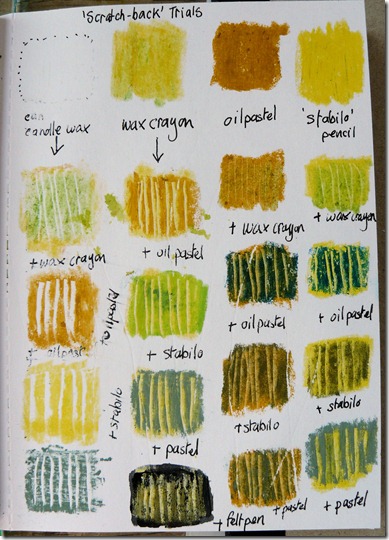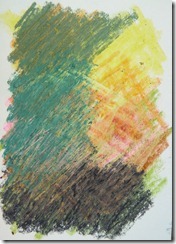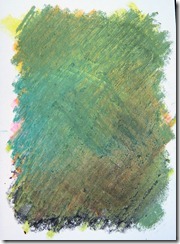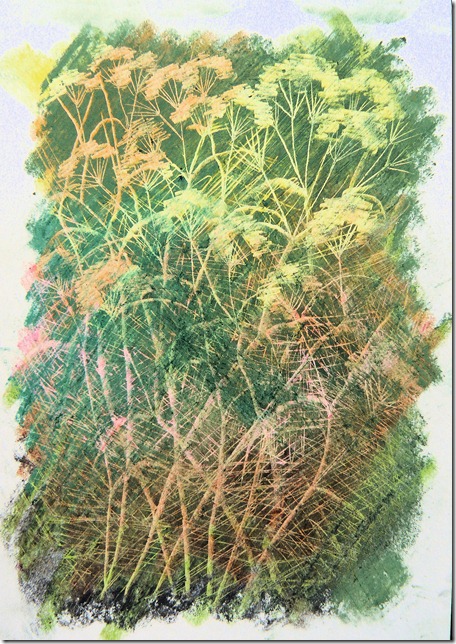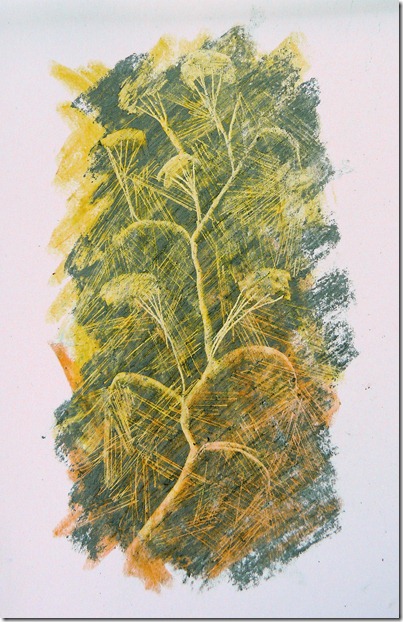I made some preliminary drawings of my sunflowers with a pencil as this was the first time I have looked at them closely and didn’t feel I knew the shapes well enough to rush into using stitching. You should do the same thing if you are going to choose a new for this drawing. Alternatively, choose something you have previously drawn. The drawing on the right is the first one and then I drew a much freer version on the left page. This ‘freer’ version was only possible after I had ‘learnt my lines’ in the first drawing and is one I much prefer. In case you think that the left drawing was done by looking at the right drawing – not so – it was done, looking at the sunflowers from the same position and trying not to look down at the page but only at the shapes ahead of me. Try this yourself and see what you get. (I wish I hadn’t done it on the opposite page – see comments in ‘tips’.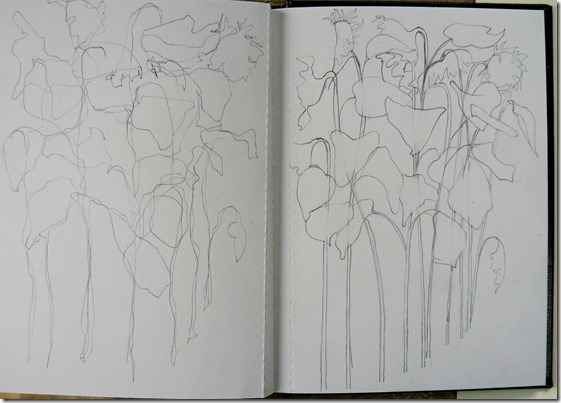
TODAY’S TASK –

Choose a hand sewing thread rather than a machine thread. This should be a pale colour and one that will happily accept colour such as a cotton or linen thread. (Wool and synthetics to be avoided for this.)
Make sure to use your thimble.
I forgot to take a photo of the stitches before I added the colour – too eager to see what it would look like with colour! So I hope you can see them clearly enough in the image below. I used the same thread throughout, making long straight stitches along the stem lines and loopy chain stitches for the leaves. In hindsight I should have stitched the edges of the sunflower heads and I might well do that later. Looking at my drawing below now I realise that I was probably more interested in the huge droopy leaves!
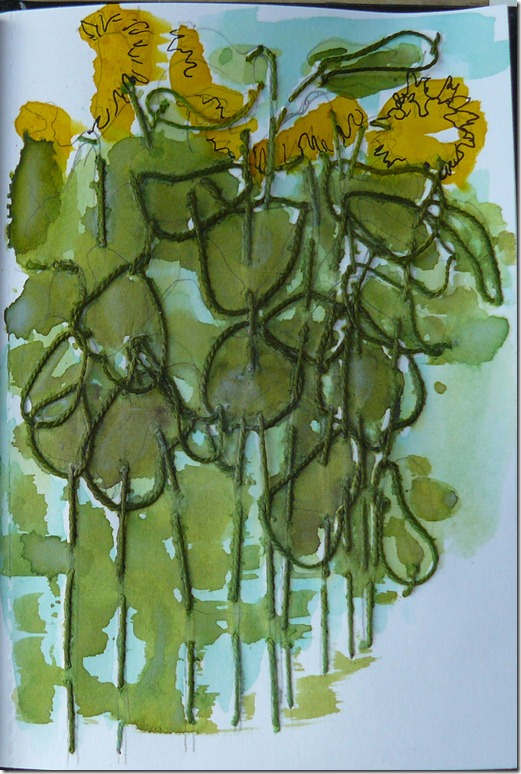
Add a liquid colour to your stitch drawing such as inks or water colour. I used a pale colour first to act as a background and then added stronger colours to the leaves. It’s interesting to notice how the thread changes to a much stronger colour than the paper and how a stitch has acted as a sort of reservoir for the liquid in places.
Take the opportunity to ‘take a print’ while it is still wet. The printed stitch is a delight and adds lots of ‘oomph’ to my freer drawing on the right.
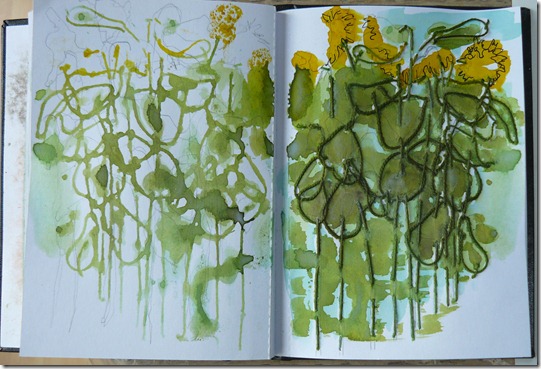
The two drawings below (scroll down – I had made myself a very long sketchbook!) were done last year on a canal boat holiday in Le Canal du Midi in France. I sat on the browe and drew the view of the canal in front of me each day for a whole week. Each of these drawings were folded in half and the wet paint (from my Kohl-i-Noor paint box) was allowed to print onto the folded half. The top left hand drawing was made using wax resist from a candle and long horizontal stitches. The top right drawing is the reverse side of the left hand. So you can see that one drawing created the base for four others. Further colour was added to the three ‘extra’ drawings of course.


Future ideas for stitching for the next few days -
- Add hand stitching in coloured thread to the stage above right and to the print it made on the page behind (see image at the bottom of this blog).
- Use machine stitching instead of the initial hand stitch or add it to one of the prints – the opposite one or the one behind.
TODAY’S TIPS – Leave a clear page opposite and behind if you wish to take a print but don’t want it to risk it covering a drawing.
Make holes in your drawing before you stitch with something easy to hold such as a stiletto or a pin with a large head or even make your own stiletto by (carefully) pressing a needle (eye first) into a wine cork. Place a piece of scrap card behind if you don’t want your holes to go through a few pages.
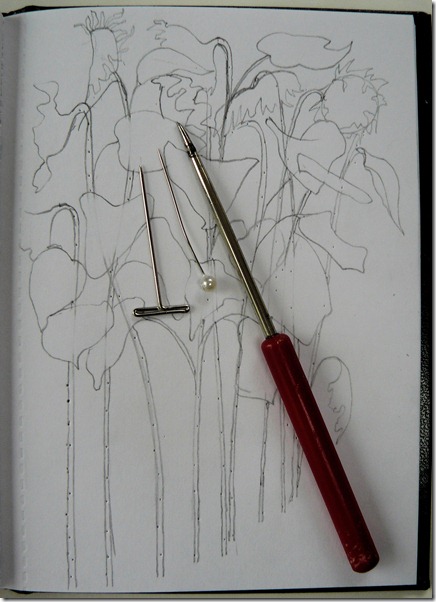
Take a look at the stitching on the reverse side of your page and also the print this has made. I can see further drawing potential in the print – perhaps adding stitching in coloured thread.

Future Sketchbook plans – I shall continue to add drawing tasks to my blog and thank you for all your encouragement from Distant Stitchers as well as others I don’t yet know. It will not be on a daily basis but it will have a different format and be at a slower pace, also as a result of your feedback! I have improved my drawing skills by doing something every day and my cat has enjoyed my company as her basket is on my large worktable.
I will post my plan for the next stage in a few days time. This will give you all a chance to ‘catch up’ with the daily tasks and give you an incentive to keeping an eye on my blog. Don’t miss it.
